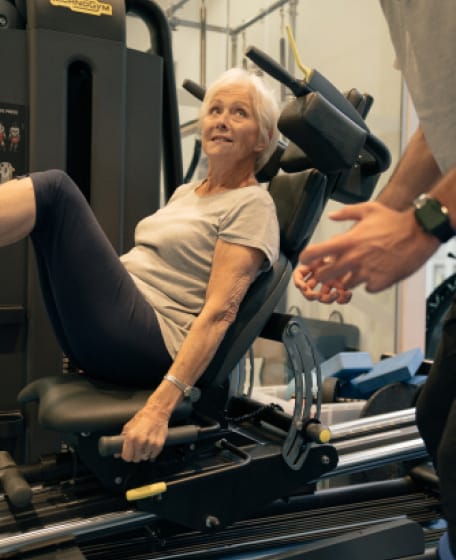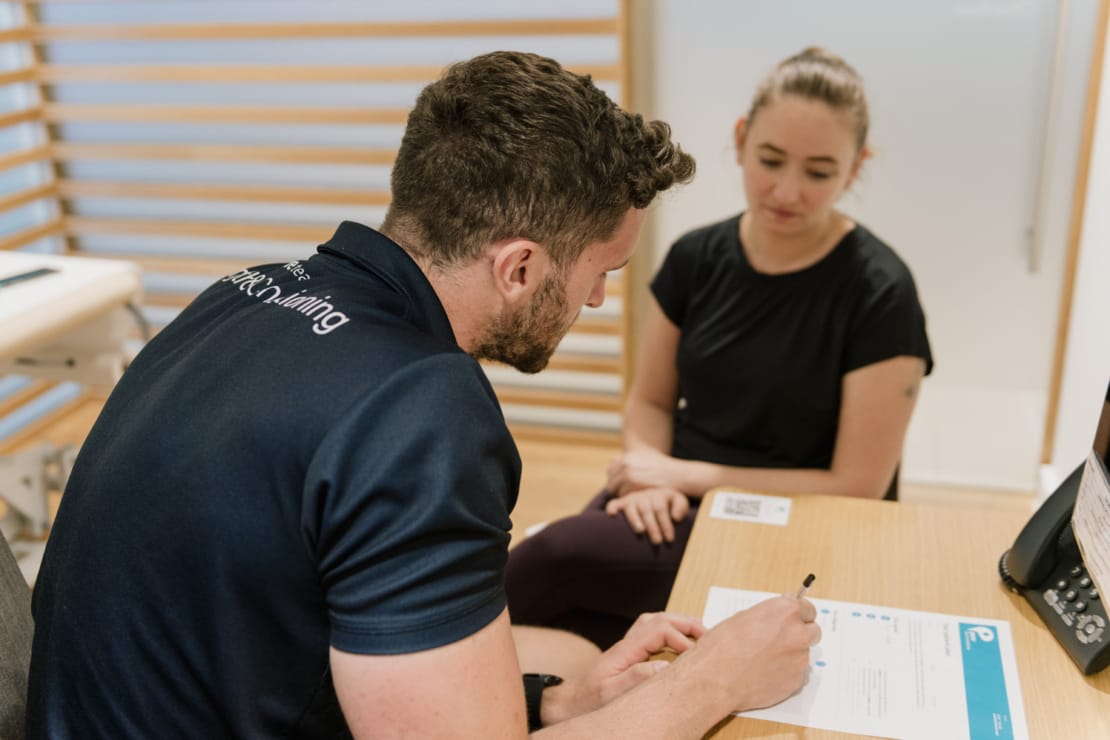Understanding Osteopathy: A Holistic Approach to Health

Pure Sports Medicine
- 10 July, 2024
- Osteopathy
- 3 min read
Understanding Osteopathy: A Holistic Approach to Health

It’s time to stop thinking of our bodies as separate, disjointed areas. Everything is connected and can play a role in how pain or injury presents. Your body can tell a whole story that expert osteopaths can discover through a full body assessment. Let’s dive in to the world of osteopathy and what it’s role is within musculoskeletal medicine.
The Philosophy of Osteopathy: Treating the Body as a Whole
Osteopathy is founded on the principle that the body is an integrated and indivisible whole. This holistic approach to healthcare means that osteopaths do not simply focus on treating the symptom or the part of the body that is in pain. Instead, they consider the relationships between various parts of the body to identify the root cause of the problem.
For instance, shoulder pain might not originate from the shoulder itself but could be linked to issues in the neck, spine, or even elsewhere. This interconnected view of the body allows Osteopath’s to provide comprehensive care that addresses not only the symptoms but also the underlying cause of distress, leading to more effective and long-lasting relief.
Osteopathic Techniques: Beyond Traditional Hands-On Methods
Osteopathy is renowned for its unique hands-on techniques, which are pivotal in diagnosing and treating musculoskeletal issues. These techniques include soft tissue manipulation, joint mobilisation, and spinal manipulation, all aimed at restoring balance, improving mobility, and alleviating pain.
However, Osteopathy goes beyond these traditional methods by incorporating movement-based interventions. By guiding patients through specific exercises and stretches, Osteopath’s empower individuals to actively participate in their recovery and manage their health. This combination of hands-on treatment and movement advice offers a holistic approach to patient care, aiming to improve overall well-being and prevent future issues.
Addressing Musculoskeletal Issues with Osteopathy
Musculoskeletal issues, ranging from acute injuries to chronic conditions, can significantly impact quality of life. Osteopathy offers a versatile approach to addressing these problems. By applying a variety of techniques tailored to the individual’s needs, osteopaths can treat a wide array of conditions such as headaches, neck and jaw pain, low back pain, and issues related to limbs like sciatica and carpal tunnel syndrome.
The holistic nature of osteopathy means that treatment plans are designed not only to alleviate symptoms but also to address lifestyle factors and other external influences that may contribute to the problem. This approach ensures a more comprehensive management of conditions, promoting long-term health and mobility.
What to Expect During Your First Osteopath Appointment
Your initial visit to an osteopath is an important step towards recovery. During this appointment, your Osteopath will take the time to understand your health concerns and medical history comprehensively. A detailed examination will follow, possibly including diagnostic tests, to pinpoint the exact nature of your issue.
The Osteopath will then explain the likely cause of your symptoms and discuss a personalised treatment plan. This plan may incorporate a variety of techniques and self-management strategies, ensuring that you are fully informed and involved in your path to recovery. Understanding what to expect during this first visit can help alleviate any apprehension, setting the stage for a positive therapeutic experience.
The Role of Movement in Osteopathic Treatment
Movement is a cornerstone of osteopathic treatment. Beyond the immediate relief provided by hands-on techniques, Osteopaths emphasise the importance of movement and exercise in the recovery process. By prescribing tailored exercises, osteopaths help strengthen the body, improve flexibility, and enhance function.
These movement-based interventions not only support the healing of the current issue but also play a crucial role in preventing future injuries. By integrating movement into treatment plans, Osteopaths ensure that patients are actively involved in their recovery, fostering a sense of empowerment, and promoting long-term well-being.
Integrating Osteopathy into Your Healthcare Routine
Incorporating Osteopathy into your healthcare routine can offer numerous benefits. Whether you’re dealing with a specific issue or looking to improve your overall health, osteopathy provides a holistic approach that compliments traditional medical treatments. By focusing on prevention and the body’s natural ability to heal, osteopathy can help maintain mobility, alleviate pain, and enhance your quality of life.
Regular visits to an Osteopath can also provide valuable insights into managing your health, helping you stay active and resilient. Embracing osteopathy as part of your healthcare routine means investing in a comprehensive approach to wellbeing, one that values the intricate connections within your body and strives for balance and harmony.
Osteopathy offers a unique and holistic approach to health care, emphasising the body’s interconnectedness and natural capacity for healing. By combining traditional hands-on techniques with movement-based interventions, Osteopaths provide comprehensive care that addresses the root causes of musculoskeletal issues.
Whether you’re seeking relief from specific symptoms or looking to improve your overall well-being, osteopathy can play a vital role in achieving and maintaining optimal health.
If you’re considering osteopathy, remember that the first step is an open and detailed consultation with your practitioner, setting the foundation for a personalised treatment plan that aligns with your health goals. Embrace the holistic benefits of osteopathy and take an active role in your journey towards better health.

Advice
Over the last 20+ years our experts have helped more than 100,000 patients, but we don’t stop there. We also like to share our knowledge and insight to help people lead healthier lives, and here you will find our extensive library of advice on a variety of topics to help you do the same.
OUR ADVICE HUBS See all Advice Hubs

